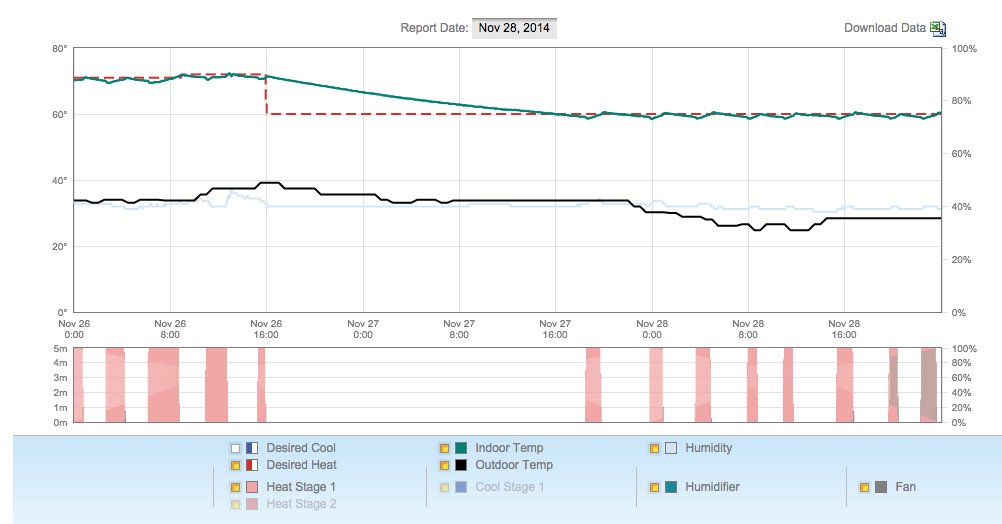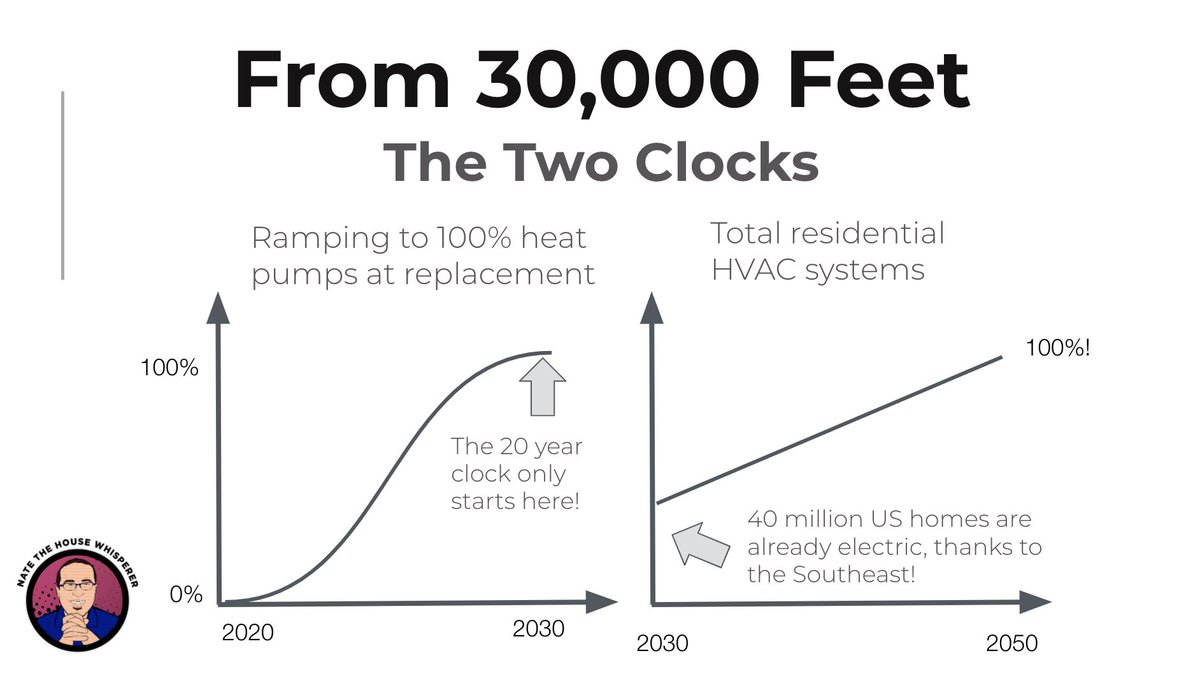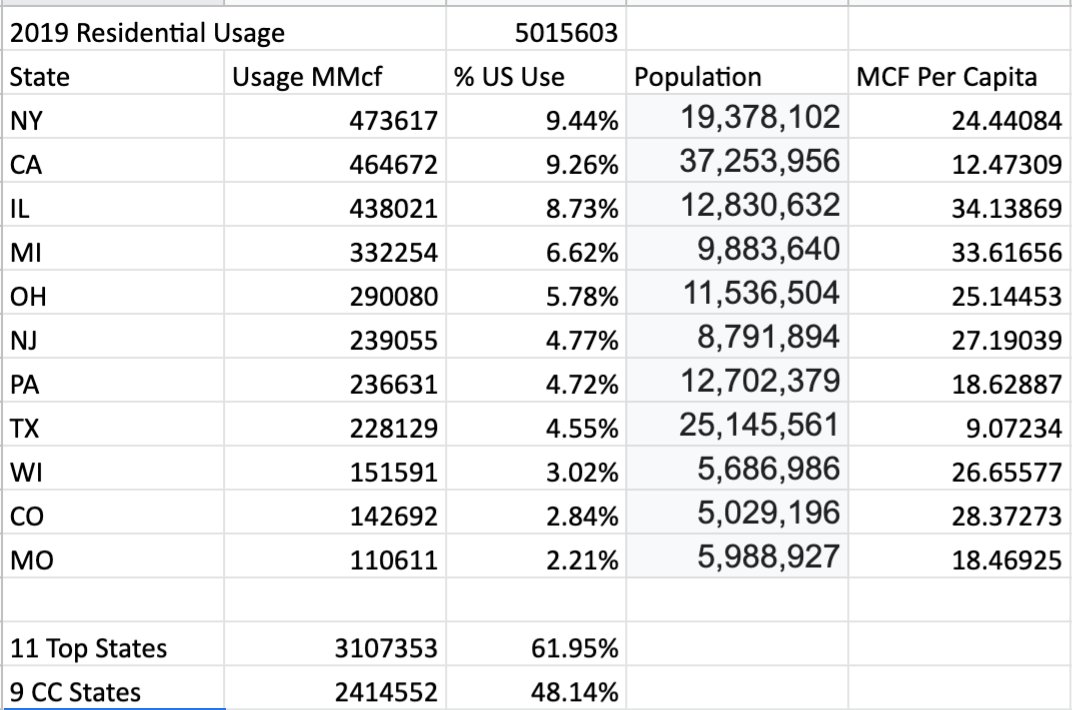
THREAD:
As painful as it is to watch what's going on in Texas, the residential solution basically looks like what we should be doing anyway:
-Tighter, more efficient homes
-Smaller, more efficient HVAC
-Batteries
-More local generation like community solar
Hard to sell tho!
As painful as it is to watch what's going on in Texas, the residential solution basically looks like what we should be doing anyway:
-Tighter, more efficient homes
-Smaller, more efficient HVAC
-Batteries
-More local generation like community solar
Hard to sell tho!
The fact of the matter is we humans don't change until the pain of not changing is greater than the pain of changing.
In residential resiliency creating a comfortable, healthy, and efficient home is a great deal of work. Work that few contractors are good at selling or doing.
In residential resiliency creating a comfortable, healthy, and efficient home is a great deal of work. Work that few contractors are good at selling or doing.
The situation in Texas brings up very valid concerns about electrification - how do we handle the really tough cold snaps?
There are a few answers.
First, hybrids. A hybrid or dual fuel HVAC system is a furnace + heat pump. It runs the heat pump when it can carry the load, then switches to the furnace. Very nice for shoulder seasons on the grid, and works in leaky homes.
First, hybrids. A hybrid or dual fuel HVAC system is a furnace + heat pump. It runs the heat pump when it can carry the load, then switches to the furnace. Very nice for shoulder seasons on the grid, and works in leaky homes.
Second, make houses tight and well insulated, they lose heat much more slowly and take less heat to do. We're good at these, here are case studies:
bit.ly/CaseStudiesEne…
bit.ly/CaseStudiesEne…
The trouble with the second option is that effective retrofits are hard to diagnose, sell, and execute. No one has done it at scale.
And by no one, I mean NO ONE. I don't know of any efficiency program that broke 10K projects/year, and most projects were light retrofits.
And by no one, I mean NO ONE. I don't know of any efficiency program that broke 10K projects/year, and most projects were light retrofits.
We have tried for the better part of a decade to find a path to scale for retrofits.
The best we can figure out is to inject the option for comprehensive retrofits into HVAC replacement sales.
The best we can figure out is to inject the option for comprehensive retrofits into HVAC replacement sales.
This is elegant as it turns out because a system that thinks about the whole house tends to sell better HVAC with better closing ratios, which means it's a better business model for HVAC contractors and hence scales naturally (if we can pull it off!)
By focusing on comfort, HVAC contractors tend to sell more heat pumps naturally, even at free quotes. Heat pumps put out much smaller amounts of heat so they give a gentle stream of heat rather than a big bucket like an oversized furnace. 

Time to introduce the simple version of the HVAC 2.0 process. It's predicated on two questions:
1. Do you have comfort or other problems to solve?
2. Is HVAC alone likely to solve them?
1. Do you have comfort or other problems to solve?
2. Is HVAC alone likely to solve them?
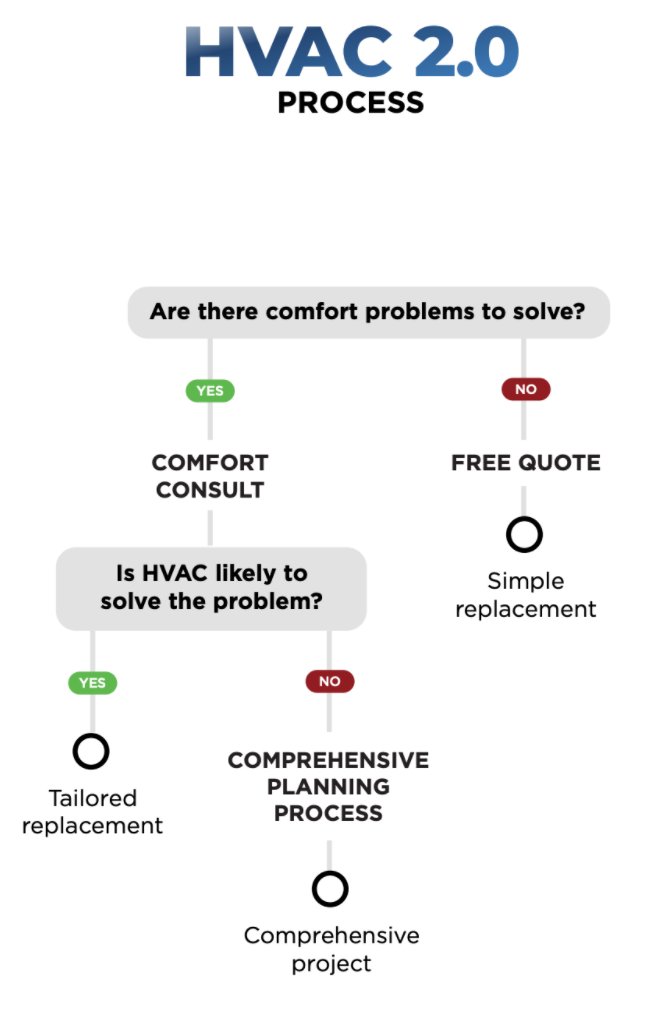
Now we tie it back to Texas - frozen pipes, a miserable few days, anxiety and uncertainty are real pain, the question is a) is it worth solving and b) what is it worth?
We had one client that was motivated by this, his house dropped 20F in 8 hrs pre project, 10F in 26 hours post
We had one client that was motivated by this, his house dropped 20F in 8 hrs pre project, 10F in 26 hours post
The Texas situation will likely motivate some to do building shell upgrades, but frankly is likely to sell more generators and furnaces than anything else.
Which brings us back to HVAC replacement. In a few years when HVAC is due for replacement, this problem may be a distant memory, or it may be a major pain point. Likely closer to the former than latter, right now we're in "God if you get me through this I'll be good forever" mode
Realism will set in in about a month, maybe a year.
The trouble here is HVAC replacement, which is the key electrification opportunity, won't happen for a few years or more.
So we have to design for them. Back to the process.
The trouble here is HVAC replacement, which is the key electrification opportunity, won't happen for a few years or more.
So we have to design for them. Back to the process.
At present this is about the split we see: 70% of HVAC replacement calls turn into free quotes. The other 30% turns into Comfort Consults which use a blower door, infrared, and interview to figure out if HVAC alone is likely to solve problems. 
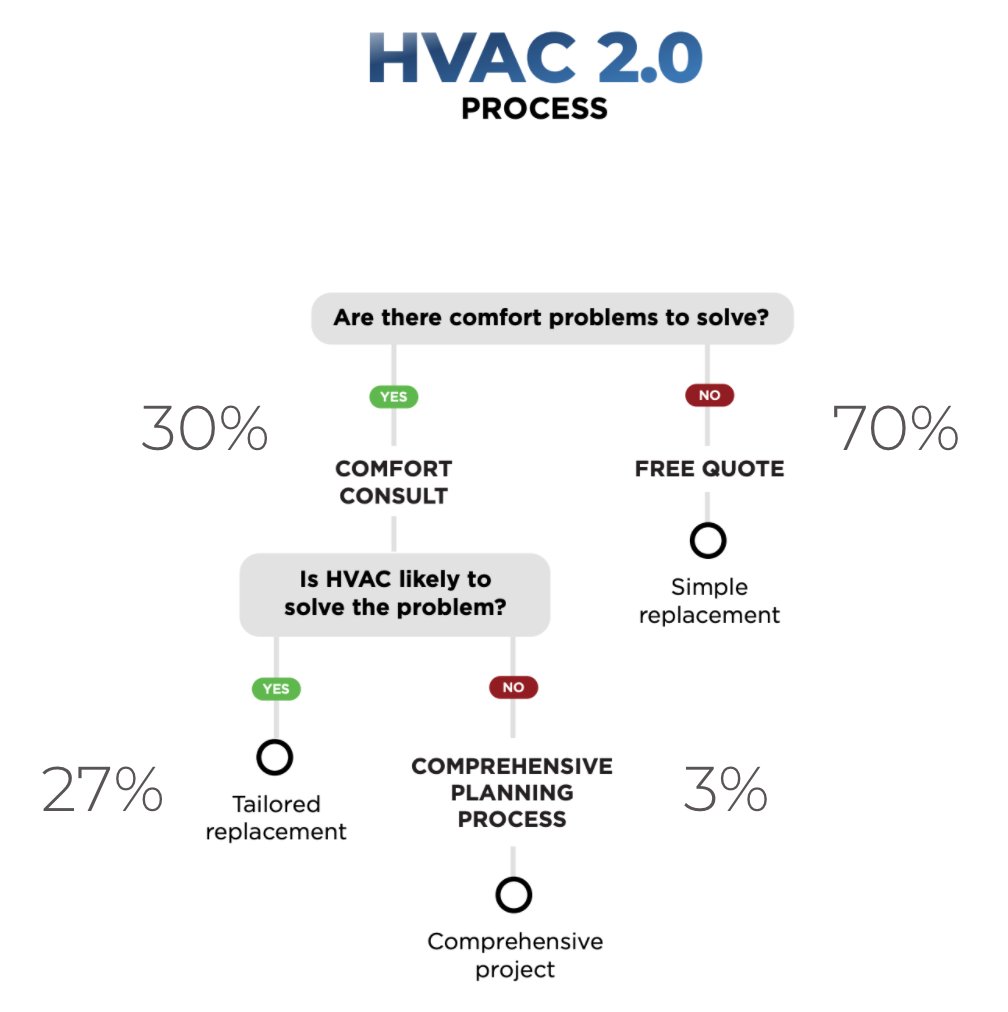
Of those 30%, almost all simply replace HVAC, but they do it with a tailored piece of equipment sized correctly to their house and with nice features like fresh air, excellent filtration, and humidity control. 
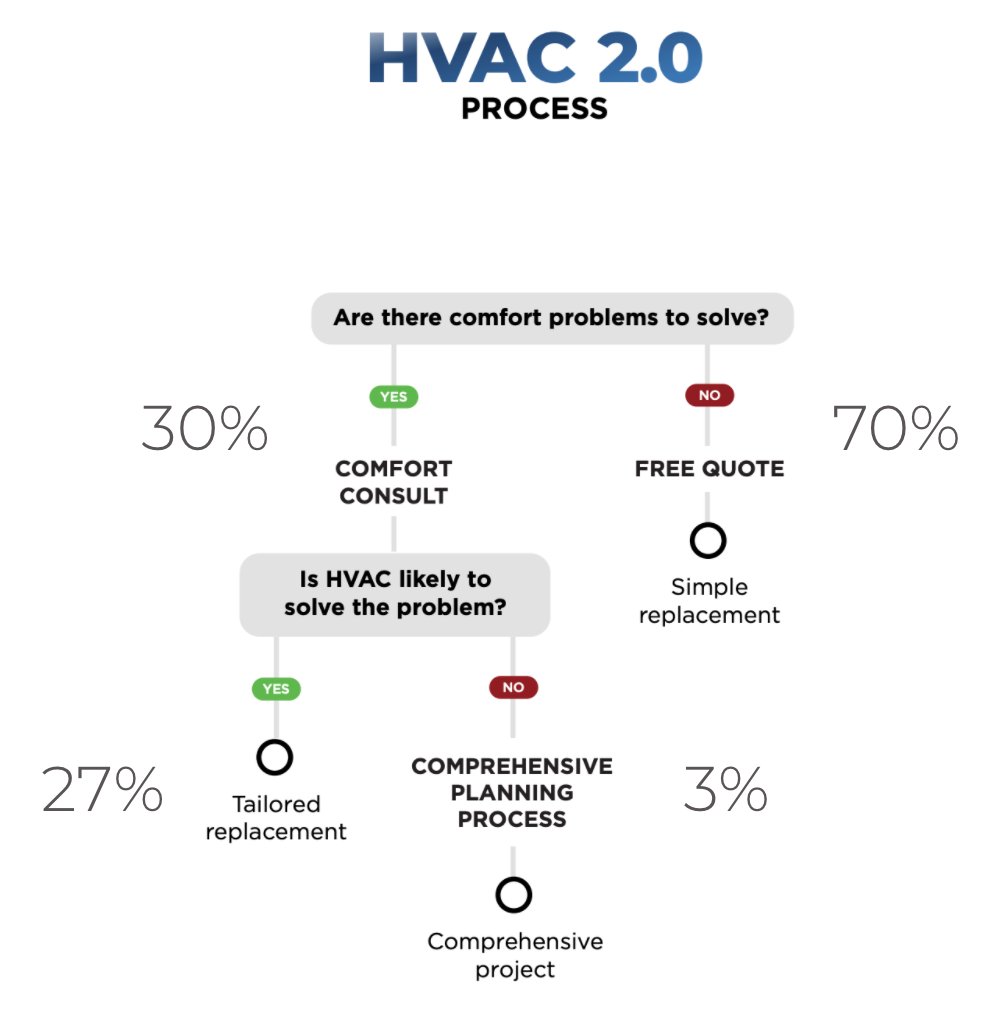
Now the crux of the matter: insulation and air sealing upgrades that make homes far more resilient in outages, and also reduce load on the grid.
Right now it's unlikely to be more than 3% of homeowners.
Right now it's unlikely to be more than 3% of homeowners.
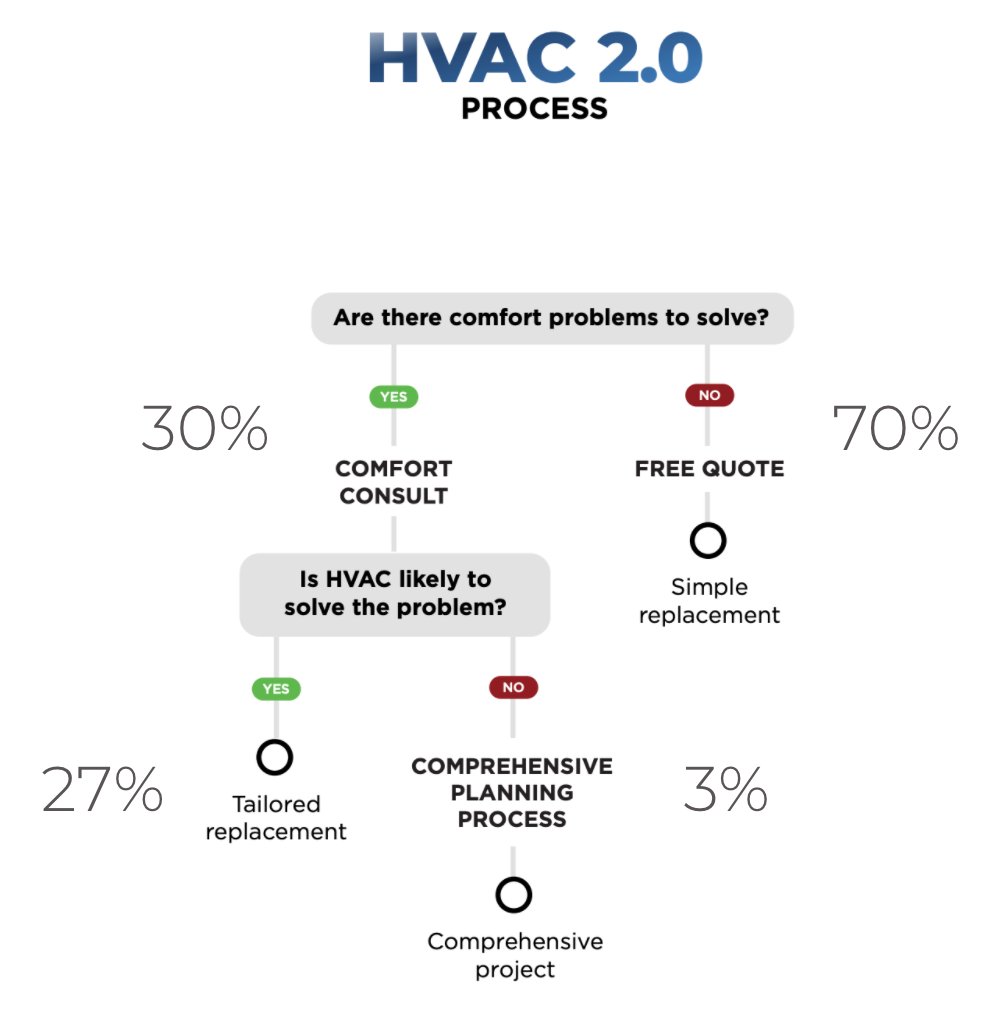
The reason for so few retrofits is simple, these homeowners need to fit 3 requirements:
1. They plan to live there a long time, 10+ years, so they will enjoy the upgrades
2. They have enough things that bother them to spend the money, and
3. They have the money
~3% or so.
1. They plan to live there a long time, 10+ years, so they will enjoy the upgrades
2. They have enough things that bother them to spend the money, and
3. They have the money
~3% or so.
I don't like this fact either, but if you know anyone more qualified to say this, I'm all ears.
Can we solve with programs? Yes! Well, sort of.
Above 1% penetration heavy incentives get too expensive. So wild bear contractors out there go tame, get used to being fed, then the program shuts down and they die locked in cages. I've seen it. A LOT.
Above 1% penetration heavy incentives get too expensive. So wild bear contractors out there go tame, get used to being fed, then the program shuts down and they die locked in cages. I've seen it. A LOT.
So how do we make things look more like this where 20% of homes are upgraded with substantial air sealing and insulation upgrades?
Air sealing is often more important in effectiveness, more here: bit.ly/HomeComfort101
Air sealing is often more important in effectiveness, more here: bit.ly/HomeComfort101
The only thing we have been able to figure out is to make sure that efficient homes have predictable resale value based on their annual energy use and cost.
This can easily open up $5-20K in resale value. That may be a joke in CA, but it's not in most of the country.
This can easily open up $5-20K in resale value. That may be a joke in CA, but it's not in most of the country.
This is about where we see things going in time with the HVAC 2.0 process, but only if efficient homes get valued so owners can move in a few years and get some of their money back. 

How likely is that? Frankly not very. Well, the 50/50 split at the beginning is likely, but until there is more financial incentive to do comprehensive upgrades, I just don't see more than 3% or so doing them.
So the unsatisfying conclusion to this is that until tighter shells are normal, along with good variable speed HVAC, the residential problem will remain.
For now, hybrids are the best option. That sucks, but it's the truth. They don't kill the grid in really cold weather (although they do steal gas away from electric plants.)
Until we create real and predictable value for efficient homes, expect nothing to change...
Until we create real and predictable value for efficient homes, expect nothing to change...
That was crazy long, but back to the beginning. The solution to grid issues in homes looks like what we should be doing anyway:
- Tighter homes
- Better HVAC
- Batteries
- Local generation
How do we make this happen?
Might we suggest publishing energy use at resale?
- Tighter homes
- Better HVAC
- Batteries
- Local generation
How do we make this happen?
Might we suggest publishing energy use at resale?
• • •
Missing some Tweet in this thread? You can try to
force a refresh

